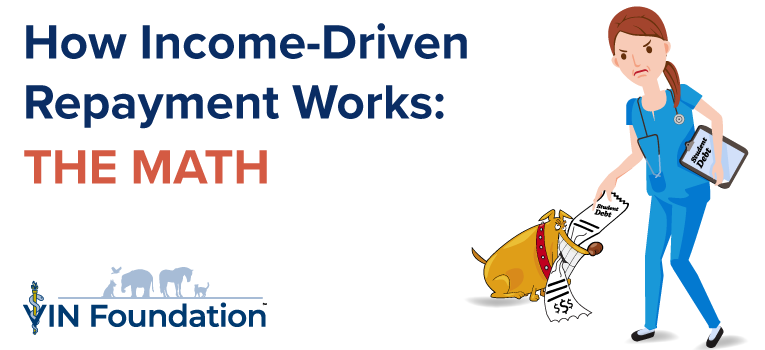“I was looking at the income-driven repayment plans, and the Pay As You Earn (PAYE) option seems like it will cost me the least amount of money. However, everything I read online says that the income-driven repayment plans cost you more money because although they lower your monthly payment, you ultimately pay more interest in the long run. I was wondering if you could break this down for me? I don’t understand how it will cost me the least amount of money if I never hit the principal balance and pay more interest?”
Here is the student loan “history and signalment” for this 2019 veterinary graduate:
- current federal student loan principal balance: $262,570
- unpaid interest balance: $35,494
- weighted average student loan interest rate: 6.34%
- current/anticipated repayment plan: not sure, maybe income-driven (PAYE)?? but loans not in repayment yet
- current/anticipated minimum monthly payment amount and any amount you’re planning to pay above that: not sure?
- any health profession student loan or loans for disadvantaged students: no
- any private loan balances and interest rates:
- Sallie Mae private student loan: $1,900 with interest rate 10.625%
- Sallie Mae private student loan: $1,886 with interest rate of 9.000%
- any credit card debt balances: $2,600
- current/anticipated taxable income (and spouse’s): $90,000 (no spousal income)
- family size: 1 (just me)
- marital and filing status: single
- spouse loan balance: none
Chief complaint/repayment goals:
Like we covered in the recent new veterinary graduate webinar, she can get 100% of her student loan balance to qualify for PAYE if she consolidates her loans using a Federal Direct Consolidation Loan. Doing so will help end her grace period early for her vet school loans, get the clock ticking towards forgiveness, help her include her FFELs to get them into PAYE and on the same clock as her veterinary school loans, and if she hasn’t started her job yet, secure a $0/mo payment for the first 12 months using PAYE.
Sending this information to the VIN Foundation Student Loan Repayment Simulator results in this projection:
Watching the loan balance grow during repayment is one of the most difficult side-effects of income-driven repayment.
Let’s test to see what that does in this case:
Moral of the story:

Dr. Tony Bartels graduated in 2012 from the Colorado State University combined MBA/DVM program and is an employee of the Veterinary Information Network (VIN) and a VIN Foundation Board member. He and his wife have more than $400,000 in veterinary-school debt that they manage using federal income-driven repayment plans. By necessity (and now obsession), his professional activities include researching and speaking on veterinary-student debt, providing guidance to colleagues on loan-repayment strategies and contributing to VIN Foundation initiatives.


